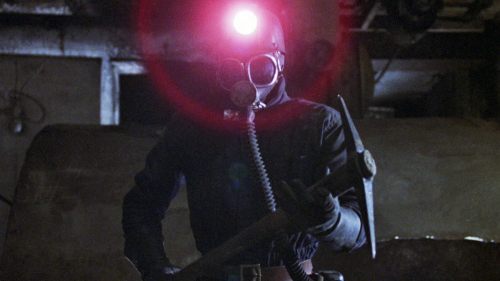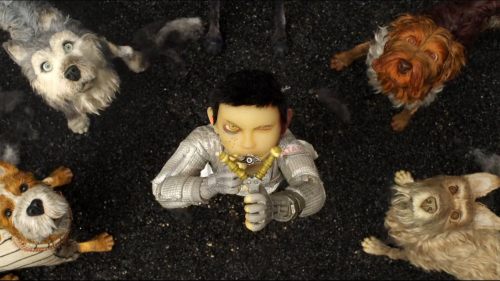How Mike Nichols Humped The Hostess And Helped End The Production Code
"My God, we've got a $7.5 million dirty movie on our hands."
That was the reaction of a Warner Bros executive after the first screening of Mike Nichols' adaptation of Who's Afraid of Virginia Woolf?, adapted from Edward Albee's famous play. The film, which included plenty of swear words and frank sexual discussion, simply wouldn't fly under the oppressive Production Code that censored Hollywood movies at the time.
Mike Nichols has died at age 82, and there are a lot of ways to remember him. He was half of the legendary improv comedy team Nichols and May. Nichols and his partner Elaine May would both go on to incredible, epochal Hollywood careers, with Nichols not just defining a generation with The Graduate but in many ways codifiying what a restless youth movie even is. He cast Dustin Hoffman in a role that made him, a role that had previously been considered for Robert Redford and Warren Beatty. He was an incredible director of theater, helming the premiere performance of Tom Stoppard's The Real Thing and he directed Angels in America for HBO and plenty of other films both good - Working Girl, Silkwood - and not so good - Wolf, What Planet Are You From?.
But what I want to look at here is the damage Mike Nichols did to the Production Code in 1966. He certainly didn't do it alone - the Production Code had been crumbling for years, and in 1964 The Pawnbroker was released with a Code seal and still featured bare breasts, making the Code all but a goner. But it was Who's Afraid of Virginia Woolf? that pretty much created the R rating we know today.
Albee's play is totally fucked up - a young couple in a college town come to dinner at the home of a professor and his hard-drinking wife and find themselves caught in the middle of an increasingly hostile and bizarre situation that's less marriage and more total war. Along the way there's infidelity, implied incest, hints of murder and a twist ending that's deliciously strange. The script is blazing, frost-bitten wit used to destroy characters. And it's, for its time, lewd. The language (and subject matter) would fly on TV today, but in 1966 it featured scandalous words like 'screw' and the phrase 'hump the hostess' (a proposed party game).
Nichols managed to shoot the movie with the language and themes intact, thanks to a sizzling adaptation script by the great Ernst Lehman. He has Elizabeth Taylor and Richard Burton, the great tempestuous couple of the screen, in the main roles. Haskell Wexler shot the movie on location. If only he could get the movie released properly he knew he would have a great film, but the MPAA had, before the movie finished shooting, already told Warner Bros there was no way Albee's language would make it to the screen (censor Geoffrey Shurlock helpfully noted that 83 pages of the script contained objectionable language). The Catholic Legion of Motion Pictures (formerly the Catholic Legion of Decency, a major moral force at the time) said there was no conceivable way the movie could escape their dreaded C for Condemned rating, although they at least said they would wait to watch the film before passing judgment.
Nichols did something brilliant next. Having been a successful Broadway director he had come into contact and become friendly with Jackie Kennedy. He invited her to the Catholic Legion screening, and after the movie finished she said - within earshot of the stuffy bishops who would judge the movie - that Jack would have loved it. The posthumous seal of approval from America's only Catholic president was enough to sway the Legion, and they passed the movie with a B ("morally objectionable in part for all").
That B forced the MPAA's hand. The Production Code couldn't be harsher than the Catholics! Jack Valenti, then the new head of the MPAA, was working hard to change the system, and this was one of the films that helped him do it. Jack Warner, head of Warner Bros, outmaneuvered the Code by announcing the studio would, for the first time in Hollywood history, release the movie with an "For adults only" label, the precursor to the R rating which the MPAA would create the next year. Warner said that theater owners would have to sign a contract agreeing to keep anyone under the age of 17 out of showings of Who's Afraid of Virginia Wooif?.
What happened next is the birth of the ratings system; Shurlock refused to grant the film a seal of approval, so Warner Bros took it before an appeals board headed by Jack Valenti. Ten days into his job, Valenti gave the film a Production Code seal (demanding only that the word 'screw' be removed) and then set to work overhauling the entirety of the outdated Production Code. Later Valenti said that this moment was the Fort Sumter for the modern ratings system, the moment when the self-censoring past gave way to a more open future. Not totally open, but more open.
If Warner Bros worried that the "For adults only" label would hurt the film they were quickly proved wrong - the ovie was a huge hit. It was the second biggest movie of 1966; only James Bond in Thunderball had the ability to beat out bickering Taylor and Burton. It was nominated in every single category at the Oscars, only the second movie to ever pull off that feat. It won five.
Of course Who's Afraid of Virginia Woolf wasn't the only film that led to the demise of the Production Code; films from Europe had been weakening the Code for a decade, as had changing American cultural mores. The cinema was under assault by TV, and it needed to set itself apart from the home viewing medium - swearing and sex could do that. And there was another film in 1966 that helped kill the Code, Michaelangelo Antonioni's Blow-Up, which MGM released without Code approval. But Who's Afraid of Virginia Woolf? was the Hollywood film that would set a new standard for adult cinema.
For more on this incredible period of movie history check out Mark Harris' Pictures At a Revolution, Amazon linked below.



